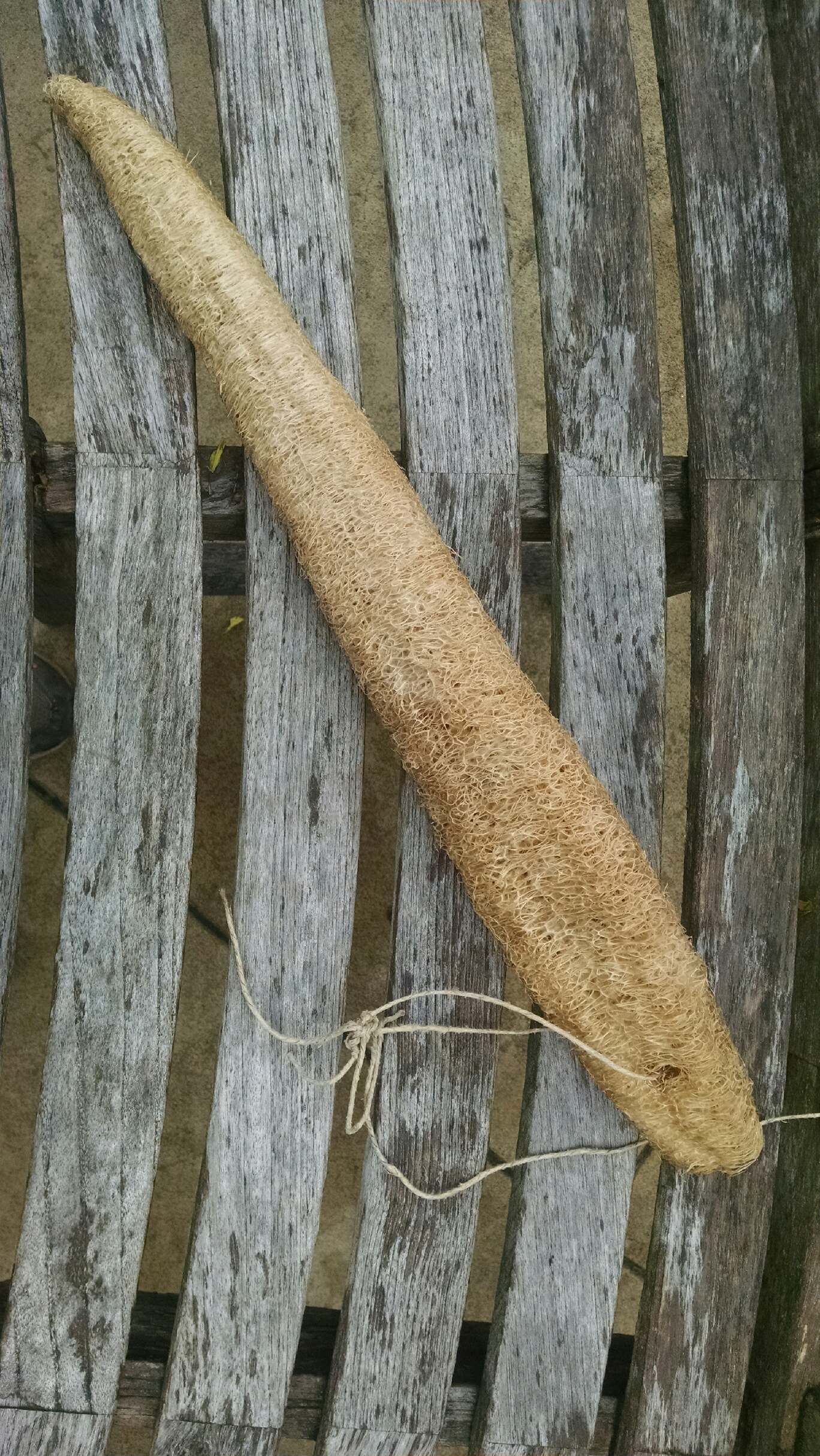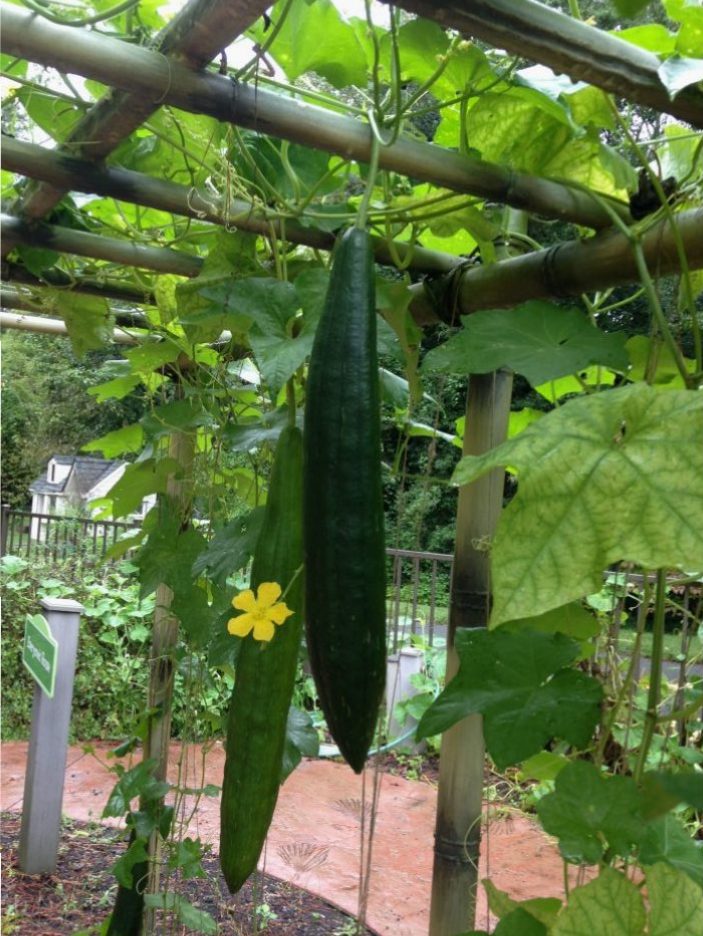Luffa: Plant Then Exfoliate
Getting the Lowdown on Luffa
Luffa sponges don’t come from the ocean. And they’re not from manmade materials. Rough-textured exfoliators originate from luffa: dried fiber from the vegetable of the same name. Luffa or loofah (botanically Luffa aegyptiaca) is a vine-grown member of the pumpkin, squash and gourd family, Cucurbitaceae. Centuries ago, the luffa plant was brought to this country by European settlers. They planned to domesticate it in the New World. Though a few varieties are edible, most were cultivated for their utilitarian value.
Not a typical garden vegetable, luffa grows slowly and matures well into autumn. It prefers plenty of sunshine, hot summer temperatures, adequate water and well drained soil. In the right conditions, luffa vines grow vigorously, sometimes as long as 30 feet. When provided an overhead trellis, the vines’ tendrils twine and wind up and across overhead supports. They can even create a natural shade canopy.
Eye-catching, sunshine-yellow flowers appear in late summer through early fall. The flowers attract bees, ants and other pollinators. After the flowers are spent, elongated fruits form up and down the vines. They dangle here and there in random fashion.
The adage “things get better with age” applies to luffa. The fruit should fully ripen on the vine before it is harvested. As it matures, the fruit lightens in color and loses water weight. The shell hardens and starts to separate from interior fibers. Typically the vine starts to dry, as well. However, wait too long and the outer shell may over harden, which makes peeling difficult. Decay also can begin, as evidenced by dark spots, when fully ripened fruit is left too long on the vine.
Growers typically break off the mature fruit’s outer shell by slamming it on a hard surface or crushing it with a heavy utensil. If peeling is still difficult, a drench of water sometimes helps. Peeling reveals a spongy fiber within, which should be extracted, washed and squeezed to remove excess water. A bleach-water soak can lessen persistent stains. Otherwise, the fibrous “sponge” should be left in the sun to thoroughly dry, which helps curtail mold growth.

Mature fibers released from the shell dry with a rough texture, making them useful as exfoliators and scrubbers. Photo by Heather Veneziano
Once the extracted fiber dries, use it for bathing and scrubbing. Or, add it to autumnal baskets filled with seedpods, acorns, pinecones and the like.
Luffa Tips
Harvest luffa fruit in autumn, which may be the time to obtain seeds from those willing to share. Store the seeds in a dry, dark place until next year’s planting, which typically follows the final frost.
Remember these are annuals so they typically do not overwinter. Cold temperatures can kill the vines, so cover plants lightly if frost is expected before the fruits have matured.
Use or store dried luffa fibers for years.
This story was first published in the Richmond Times-Dispatch, November 2016.
